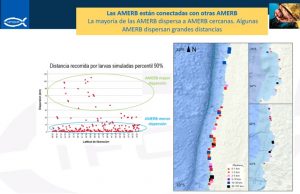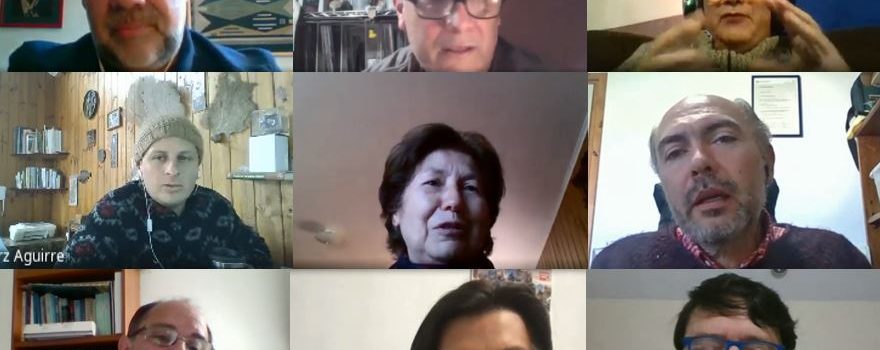IFOP held “Coastal circulation and larval dispersion between management areas and protected areas in the Great Bay of Coquimbo” Seminar.
March 29th, 2022
Within IFOP developed Under Management Areas Regime Fisheries Monitoring Program framework , addressed by, “Coastal circulation and larval dispersion between management areas and protected areas at the Great Coquimbo Bay” seminar. Catherine González, Semi-Senior Researcher and coordinator of the event, pointed out: “The purpose was to share advances in the understanding of coastal circulation and larval dispersal in an area of high value for benthic fisheries and marine conservation, promoting collaboration among various institutions researchers. On the occasion, researchers Andrés Sepúlveda, Eduardo Flores and Sergio Rosales, from the Universidad de Concepción and UCN, presented development of hydrodynamic models advances in the interest.area. Subsequently, Gonzalo Olivares from 3SE, Catherine González from IFOP and Sebastián Insunza from Universidad de Concepción presented advances in the understanding of larval dispersal of benthic species and connectivity between fishing areas”.
Katerina Varas, local GEF-FAO Marine Governance project coordinator highlighted the importance of this seminar for generating dialogue spaces between researchers and the need to disseminate this information to local actors and authorities, for their consideration in marine spatial planning. The seminar was followed by a discussion between researchers in which the need to reduce the knowledge gaps on the larval biology of benthic species in Chile was highlighted, seeking basic financing to advance basic science, input for larval dispersion models. In addition, the need for collaboration between researchers was reinforced, making available hydrodynamic models generated by different work groups, and the data on which they are built, for a better understanding of coastal circulation in the Coquimbo region and at national level.
Álvaro Wilson, IFOP Semi-Senior Researcher, pointed out that: “From the management point of view, our interest in using these modeling and simulation tools, which, together with a better understanding of the biophysical mechanisms and processes involved in transport and larval dispersal, they are helping us to identify, for example, which sectors of the coast could be behaving as source or sink areas for larvae, as well as allowing us to determine the possible existence of sites that act as critical nodes of connectivity between local populations or even define for some benthic resources (such as loco, locate, among others), “stock units” at a different geographic scale than the one currently considered. Advances in this line of research could provide key knowledge for the sustainability and management of this type of fishery resources…”.
Finally, Luis Ariz, Management Areas Section Head, highlighted that: “In benthic species populations, which have wide geographic coverage, simulations using coupled biophysical models point to knowledge of the connectivity between spatially explicit subpopulations, with a view to collaborating in improving management decision-making. Likewise, an adequate knowledge of primary life cycles of species of interest will allow a better characterization of the particles that are subjected to simulations in their trajectories in the water. Therefore, seminars such as the one held are relevant because they enhance cooperation and synergy between researchers who work on issues that are important for fisheries management.”
